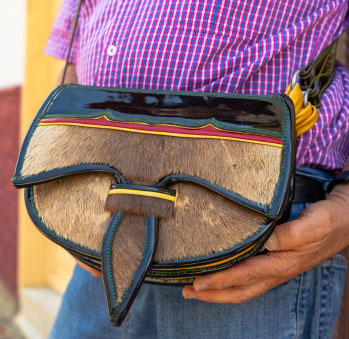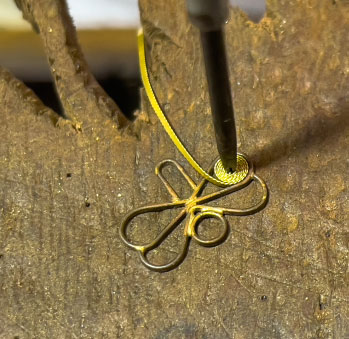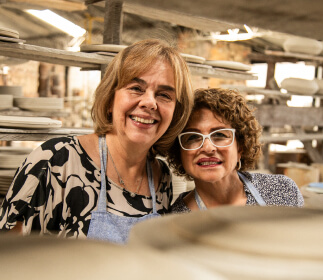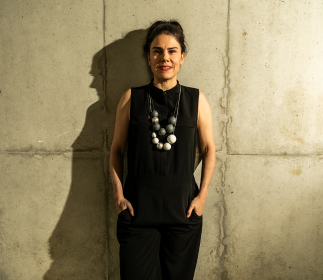Antioquia Route
Antioquia’s mountains are unparalleled. They truly feel endless. You could gaze at them forever. This is probably why there are so many towns scattered through them. We want to add one more ingredient to enrich an already flourishing trail filled with landscapes, coffee crops, gastronomy, and architecture: crafts! On this trip, we suggest you explore the filigree jewelry of Santa Fe de Antioquia and the contemporary jewelry or Medellín and Envigado, the wood work in Marinilla and El Retiro, the distinct hand painted ceramics of Carmen de Viboral, the weaving of Santa Elena, the art of guarnielería or carriel (bag made from leather) making in Jericó, and ethnic jewelry of Cristianía on the road to Jardín, besides the macramé and wicker basket work of the capital. Each one of these stops offers the best tourism you can find. They are bursting with interesting things to see, visitors strolling around town squares, and activities to fill up your days. If you want to know the meaning of the word picturesque, this is the place to be. The region’s people are proud of their streets, houses, and traditions. They could be described as funny, chatty, generous, welcoming, and devout. This is their world. Additionally, their singsong accent is like a melody that gets stuck in your head. We recommend you add some spice to this landscape and see how its master craftspeople work. With them, you will understand how difficult it really is to explain what “la antioqueñidad” is. It is a way of experiencing, telling, and playing a leading role in the world. As you hear them talk, you will start noticing that there is a “paisa” way of approaching life. They have their own models and have no intention of changing them. They know how to keep their traditions alive, and they celebrate them through the figure of the arriero (the muleteer). We also invite you to experience their diversity and visit the Embera chamí community. Their territory is another part of this land that we wish to exalt.
Embark on a journey full of history

Artisans along the way
Artisans along the way
We recommended this tour
Schedule the visit in advance with the artisans.
Carry cash.
6 days
Car or Bus

MEDELLÍN - ENVIGADO - MEDELLÍN
The capital of Antioquia is a world of its own, boasting museums, parks, a botanical garden, vibrant nightlife, and of course, its paisa culture and warm climate. It also features Parque Explora, the planetarium, the green haven of Parque Arví, and is surrounded by hills like Cerro Volador, a site from which you can admire the city. With so much to see, start by exploring downtown, where you can dive into the bustling commerce, visit Plaza Botero, and the must-see Museo de Antioquia. Then, meet three artisans showcasing diverse crafts: contemporary jewelry, macramé, and wicker basket making, giving you a different perspective of the city.
Right next to Medellín is Envigado. Plan for a late lunch and then visit Helena Aguilar, a master of contemporary jewelry. In the evening, return to Medellín, which will serve as your base for exploring the surrounding municipalities awaiting you.
MEDELLÍN – EL RETIRO – CARMEN DE VIBORAL
On the second day, head out of the city towards the eastern Antioquian mountains. Your first stop is El Retiro, an hour from Medellín. Explore its Municipal Park before venturing into one of the many local furniture workshops, like Carlos Rendón’s. If you’re into ecotourism, remember that El Retiro is home to the Los Salados Ecological Park, the Tequendamita waterfall, and the San Sebastián La Castellana Ecological Reserve.
After lunch, head to Carmen de Viboral, an hour away, known for its hand-painted ceramics. Visit three workshops—Cerámicas El Dorado, Esmaltarte, and Artemanía—to understand how this craft, which almost disappeared in the late 20th century, has impacted the lives of locals and their commitment to it. Stroll through Simón Bolívar Main Park and its themed streets before resting here, where you’ll find a variety of lodging options.
CARMEN DE VIBORAL - MARINILLA - GUARNE - SANTA ELENA
Say goodbye to Carmen and head to Marinilla, just half an hour away, where you’ll meet Fernando Toro, a passionate wood craftsman who is also a mariachi singer. Here, you can also visit the Main Park and choose from a wide array of museums: the Ramón Hoyos Museum, the Independence and History Collection, the Archaeology Room, the Alonso Ríos House Museum, and the impressive Collection of Crosses, Christs, and Crucifixes.
On your way to Santa Helena, pass through Guarne, where you can appreciate the vast landscape from its high points like La Cruz, La Vírgen, or El Orégano. In Santa Helena, visit the Entomological Museum and Piedras Blancas Butterfly House for a unique experience, and explore the weaving and threads with artisan Sandra Jaramillo. Return to Medellín for the night.
MEDELLÍN – SANTA FÉ DE ANTIOQUIA
After the visual delight of arriving in this postcard-like town and enjoying a good coffee with a typical sweet, visit the Cathedral of the Immaculate Conception. When you get there, you will see the central altar and a great, silver-embossed shrine. Watch it closely. Contemplating the shrine, you will come to understand how the church drove and sustained much of this region’s jewelry tradition. In fact, it was its main benefactor for years. With this in mind, tour the workshops of the silver filigree masters and discover how a tradition is rooted in knot weaving. Its museums, Juan del Corral and Francisco Cristóbal Toro’s Religious Art Museum, also offer a great insight into how this region was established. Spend the night here before heading to Jericó early the next morning.


SANTA FÉ DE ANTIOQUIA - JERICÓ
Located 120 km from Santa Fe, Jericó is not only renowned for its beauty, earning it its heritage town status in 1959, but also for its vibrant cultural life, the reason why it’s called the Athens of the Southwest. It is also known for its religious spirit, being the birthplace of canonized Mother Laura. It’s the cradle of one of the pieces that define Antioquian identity: the leather carriel paisa. Its central park functions as a weekend market with a vast variety of trees. Don’t miss trying the sweets, one of the route’s highlights. We especially recommend cardamom candy, the Jericó dessert, and Luisa cookies. With a sweet palate, discover how the carriel is made, leaving you in awe.
JERICÓ – JARDÍN
Jardín is said to be the most beautiful town in Antioquia. Located 94 km from Jericó, this is the final destination of your trip, and we suggest it as your overnight stop. From here, you can plan various outings around the area and even reach Caldas if you wish to extend your trip. Before arriving in Jardín, after about two hours of travel, you’ll pass through Cristianía, an Embera community settlement. We encourage you to meet the masters of ethnic jewelry. Not only is it incredible to watch them work, but you can also find a necklace that will protect you.
In Jardín, visit the Restrepo store, take a tuk-tuk ride to the Cristo Rey viewpoint for stunning landscape views. If you want to continue marveling at the scenery, take the La Garrucha cable car ride for a bird’s-eye view, or walk an ecological path that will take you to the crystal-clear waters of Charco Corazón in 40 minutes. A must-do is visiting the Caves of Esplendor or El Encanto, filled with breathtaking waterfalls.

Traditional cuisine
and typical bites
Provoke yourself

Don't leave without eating this 
The bandeja paisa in Antioquia is a dish that you simply must try (but be warned, you’ll need a nap after eating one…). This hearty and much-loved dish consists of beans, white rice, ground beef, chorizo, blood sausage, crispy pork belly, a slice of ripe plantain, avocado, arepa, fried egg, and hogao (a sauce made with tomato and onion). You can find it at many restaurants across the department, but El Rancherito, a well-established chain with over 50 years of tradition, offers an excellent version of this classic.
To lunch we go 
Soups are the most common choice for lunch in Antioquia. One standout is sopa de cura en vereda, a hearty rice soup with ground meat, potatoes, ripe plantain cubes, crispy pork, avocado, and cilantro. Another classic is sancocho antioqueño, a rich stew made with beef ribs, pork loin, pig’s feet, cassava, green and ripe plantains, arracacha, potatoes, cabbage leaves, corn on the cob, and topped with hogao. You can find both soups at El Rancherito.
Flavors to discover and snack on 
Pork is a staple in Antioquia, and chicharrón is particularly prized. Enjoy it with a traditional arepa paisa, patacones (fried green plantains), cassava, or papas criollas (small native potatoes). In Envigado, make sure to stop by La Gloria de Gloria or El Trifásico for a taste of this delicious treat. You can also savor it vacuum-packed at Restaurante Con Tradición in Marinilla, where you can enjoy a crispy barriguero with pickled ocañera onions, accompanied by purple cabbage and a sweet plantain and vanilla sauce.
Envigado is also home to the best morcilla (blood sausage) in Antioquia. This sausage, made from pork blood, rice, and seasoned with onions and spices, is truly exceptional at La Gloria de Gloria. They serve a morcilla casado with arepa de bola (a round corn arepa typically served at lunch), which is simply extraordinary at Restaurante Con Tradición. Additionally, Sancho Paisa offers a wide array of flavors to discover and small bites perfect for any time of day. Their locations at km 16 on the Las Palmas road and in Rionegro, near the José María Córdova airport, serve arepa de choclo or the traditional arepa paisa with cheese, empanadas de iglesia (small empanadas stuffed with potato and hogao that were once sold in churches to raise funds), and calentaos (fried leftovers), among other delights. The restaurant also has a shop where you can buy different kinds of corn arepas, fresh cheese, and other local treats to take home.
Don’t miss the parva in Marinilla at Buen Pan de Queso. This includes a variety of sweet and savory treats like bizcochos de teja, costras, mojicones, colaciones, cheese sticks, panderos, buñuelos, baked empanadas, pandequeso, and pan de yuca. You can also find similar treats at La Tienda de Don Pedro on the road to Rionegro.
To sweeten the palate and unmissable drinks 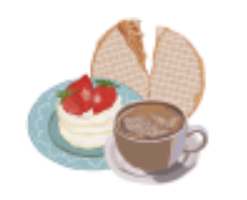
When it comes to sweets, you can’t miss the blackberry jam and dulce de tomate de árbol jam, also known as colitas de ratón (little mouse tails). These simple, delicious sweets are made by cooking the fruit in a simple syrup of water, sugar, or panela , flavored with cloves, cinnamon, or both. El Balcón Azul in El Retiro offers a sweet ending to your meal with colitas de ratón or an arepa de mote ice cream. The arepa de mote is a local variety made from yellow corn treated with ashes. At El Astor and Santa Helena pastry shops, you’ll find an array of sweets, including nougat, pasteles gloria, piononos, and moros (little animal-shaped cakes) that are loved by both kids and adults alike.
In every municipality you visit, you’ll be offered aguapanela (a cold or hot drink made from sugarcane), claro (a refreshing drink made from the corn used to prepare mazamorra), chicha (fermented corn beverage), guándolo (a drink made from sugarcane and lime), and chamomile tea, especially popular in Marinilla. And, of course, don’t miss a cup (or several) of coffee from the region, which has a long-standing coffee tradition. Le Montañeré Mercado de Origen in El Retiro offers over 50 varieties of coffee, brewed with various methods like drip, filtered, French press, and Chemex. It’s a true coffee experience you can pair with local snacks!
Other local delights 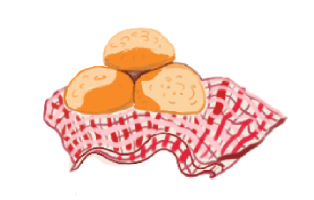
Mondongo is another popular dish in Antioquia. Mondongo’s restaurant offers an unbeatable version, with its perfect balance of flavor and texture, served with white rice, arepa de bola, avocado, banana, and chili. It’s hard to find a better version than this.
Tamales antioqueños stand out. Made with corn dough, pork ribs, leg, and bacon, as well as potatoes, raisins, carrots, peas, string beans, tomatoes, onions, and garlic. For some of the best tamales, visit Tamales Exquisitos, where you can dine in or take them to go. You can also try them at Tamales Los Cascarrillos in Marinilla or Sancho Paisa, where they offer their famous tamal Sancho Paisa.
Route acknowledgement
Recommended sites
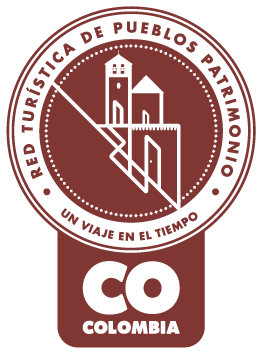
Pueblo Patrimonio
La Red Turística de Pueblos Patrimonio de Colombia es un programa especial del Ministerio de Comercio, Industria y Turismo, ejecutado por FONTUR, que trabaja con 17 municipios de Colombia que poseen declaratoria de Bien de Interés Cultural (BIC) a nivel nacional para su valoración y proyección mediante el turismo, generando así más oportunidades de desarrollo y sostenibilidad en las comunidades.

La Medalla a la Maestría Artesanal es un galardón que Artesanías de Colombia entrega anualmente, con el cual se hace un reconocimiento a aquellos artesanos, empresas y comunidades artesanales que, contando con una trayectoria destacada, sobresalen a nivel nacional por su excelencia en el oficio así como por preservar el quehacer artesanal.

Denominación de Origen
Es un signo distintivo que identifica productos reconocidos o famosos por tener una calidad o características específicas derivadas esencialmente del lugar de origen y la forma tradicional de extracción, elaboración y producción por parte de sus habitantes. La protección conferida sobre una Denominación de Origen implica que ninguna persona puede identificar con la denominación protegida productos iguales o similares a los amparados, cuando no provengan del verdadero lugar y no cumplan con las características o calidades que le han dado la reputación al producto reconocido. Las Denominaciones de Origen para productos artesanales colombianos que han sido protegidas por la Superintendencia de Industria y Comercio en nuestro país son actualmente 12.
No puede copiar contenido de esta página











































